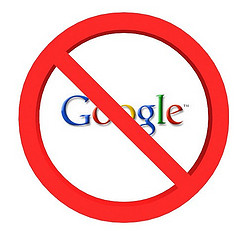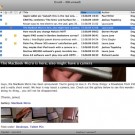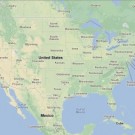Ways to Get Banned by Google
Things can get heated when thousands of companies are competing for the coveted top few spots on Google’s search engine. Things can get so intense that even the most honest companies can resort to deceitful tactics in search of higher web traffic. These tactics might bring brief success, and they might even work for a while. But search engines are getting better at identifying these ‘black hat’ strategies, and eventually your website will be penalized or banned from Google for practicing them. Here are some of the dishonest methods that can get you banned from the top search engines.

Copying Content
Quality content is a big driver of traffic to any site, but it is very difficult to write a constant stream of good content. This leads many sites to copy content, and it can happen in a few ways. First, some websites copy content from themselves and put it on a new page; this drives new traffic without creating new content and is dishonest. A second method arises when websites copy content from another website. Yet another method employed by websites is to use a bot to “scrape” the web for content, modify it slightly, and post it to their own site. All three methods are a great way to be banned from Google, or, at the very least, severely penalized in search rankings.
Cloaking
Cloaking is one of the most popular ways to trick users into visiting your site while simultaneously tricking Google into ranking it higher. Website owners cloak their websites by presenting one version to Google; this version of the site makes it seem like whatever a certain user is looking for, but when they click on it, it takes them to a totally different website.
For example, let’s say you are searching for spray paint. You click on a link that appears to be just what you need (the description tells of a site that sells spray paint), but the website re-directs to a site that doesn’t have anything at all to do with paint. You’ve just been the victim of ‘cloaking’; tricking users to drive traffic to a site. This is a ban-able offense on Google and an easy way to get kicked off.
Hiding Text
A popular “cheat” to drive traffic to a site is by inconspicuously stuffing it with keywords. You can do this by inserting keywords into the background of the site and making them the same color. If you have a white background, then you can “stuff” the background with invisible white keywords—keywords that are still picked up by Google, but they can’t be seen by visitors.
For example, pretend a SEO company based in Chicago is trying to stack keywords (they wouldn’t be a very good SEO company if this were the case!). They would insert keywords like “SEO Chicago” into the background, and that keyword would be picked up by Google’s ranking algorithm—but it would remain completely hidden to users.
A similar method, called title stacking, is often used for similar results. People attempt to add as many keywords into their title as they can by adding additional title tags, or try to put as many titles on one webpage as they can. Google and other search engines, however, are very good at unearthing these “cheats” and they will penalize or ban you if they find out. In the end, it’s not worth it.





